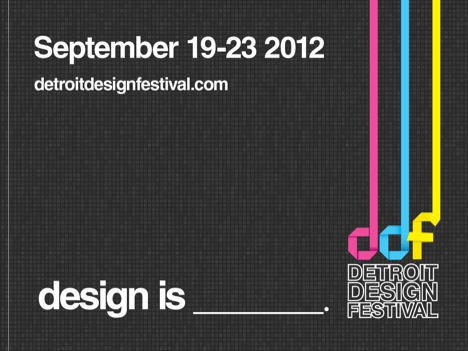Excerpt:
Day 33
Of all the cities I visited on my trip, I was most excited to see Detroit. However, it would be too easy for this article to reinforce the status quo when it comes to talking about Detroit. Sure, I could write about Michigan Central Station which has come to serve as the de facto symbol of Detroit's landscape of abandoned buildings. (It really is a sight to behold, especially when you come across it in the dead of night like I did.) I could write about the plan to shut down streetlights or that whole Robocop / Kickstarter thing. Instead, I'm going to introduce you to some of the absolutely amazing people I met in Motor City, because the new definition of Detroit is based on the people not the city.
I stopped by the Detroit Creative Corridor Center (DC3), housed in the College for Creative Studies, to understand the current context for design and designers in Detroit. The goal of DC3 is to spur economic development by "presenting assets that are uniquely Detroit," to advance Detroit creatives, and to leverage design to help solve the "deep challenges" of the city. In reality, this means the Center acts as one part business incubator, one part ambassador, and one part party planner. DC3 also happens to know everyone and everything involved in design in Detroit.
Back in 2006, Business Leaders for Michigan gathered to map the assets for Detroit and surrounding areas as a way of galvanizing the region. Creative talent was high on the list, but retaining and attracting that talent was a problem. Then 2008 hit. Although the atmosphere in the city "eventually stabilized," there are still physical and psychological barriers to developing the creative community in Detroit into a healthy and flourishing one. In order to take the first step in overcoming these challenges, Matt Clayson, Director of DC3, is asking the question, "What are the big deficiencies that prevent creative talent in Detroit from telling their stories?"
Perhaps the largest barrier is not actually in Detroit, but rather is how the media portrays Motor City as a post-apocalyptic wasteland that is a little too Escape From New York instead of Urbanized. Clayson recalled a story of how a group of politicians visiting from Algeria were scared stiff by their handlers by the time they arrived in Detroit. News stories on Detroit tend to originate from "someone who's never visited the city" or, if they have, perhaps the fact that the city is an "insider city" makes it difficult to penetrate the hard outer skin. For those who do live in the city, however, "two to three degrees of separation" creates more of a "shared experience," if not a survivor's culture.
And that's where programs like this September's Detroit Design Festival come in. "The Festival tells Detroit's story from Detroit's perspective," said Programs Manager Adrian Pittman. Designers, artists, technologists and the like can not only show off their work at the Festival but can also bring visitors into their studios and into a Detroit not yet fully visible to outsiders. Finding a balance between making Detroit "more consumable for outsiders," while maintaining that atmosphere of Where Everybody Knows Your Name, is tough, though. On the one hand, designers and artists can do their work purely informed by the city of Detroit with little "pressure from mainstream trends." On the other hand, DC3 knows that bringing "larger industry players" into the mix is crucial for transforming the city. "We don't want quick wins," said Associate Director Bethany Betzler. "We want things that will show results in the long run."
Click HERE to read the full story on Core77!
Posted by
Erin Rose
at
12:45 PM
Labels:
Detroit Art,
Detroit Design Festival 2012,
Detroit Making Headlines,
Detroit Travel


Subscribe to:
Post Comments (Atom)





.jpg)

0 comments:
Post a Comment